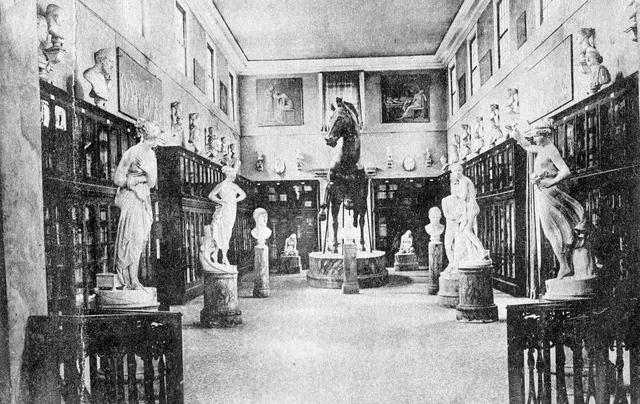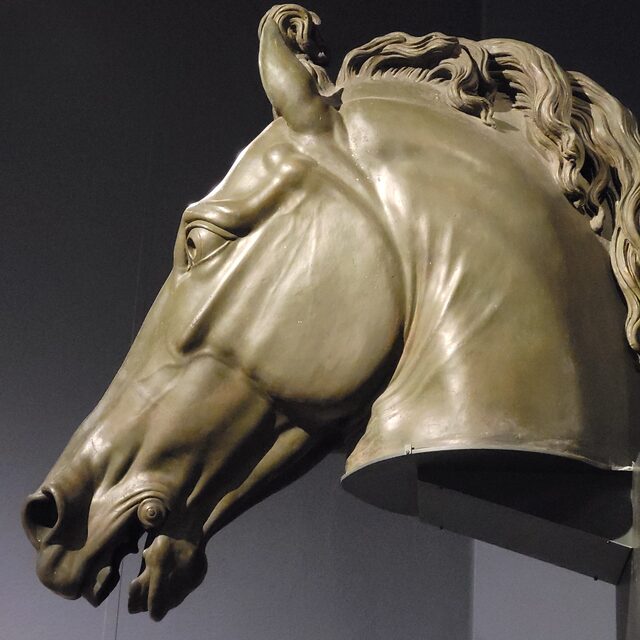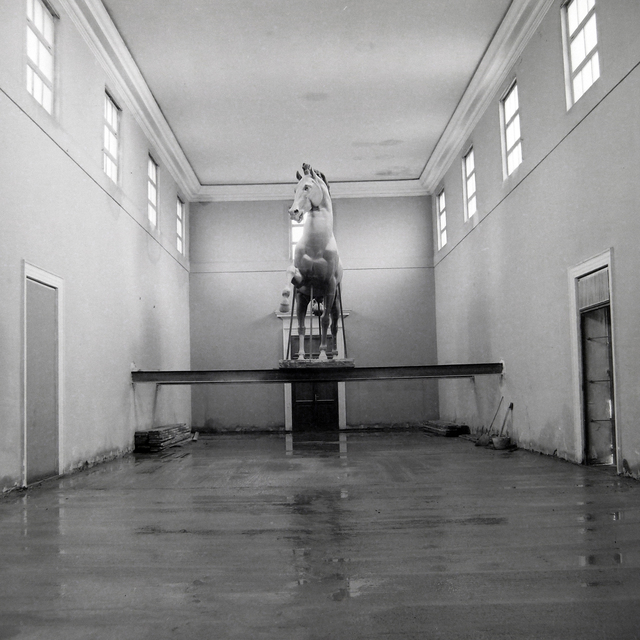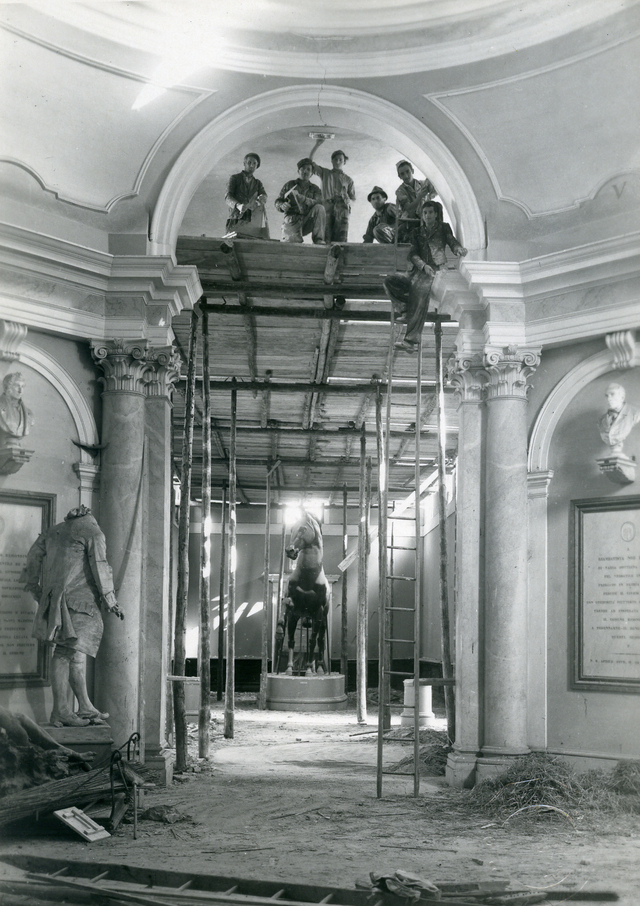A monumental plaster horse by the renowned Neoclassical sculptor, Antonio Canova, is being painstakingly restored fifty years after it was dismantled and hidden away in storage. The sculpture, known as the Cavallo Colossale (Colossal Horse), is a masterpiece that reflects Canova’s unmatched craftsmanship and ambition. But, for the better part of five decades, this iconic piece of art has remained largely out of public view, with only the horse’s head being on display. Now, as restoration efforts commence, the horse is set to be reassembled and displayed once again, offering a rare glimpse into the final work of one of Italy’s most celebrated artists.
The Dismantling of the Colossal Horse
In 1969, the Colossal Horse was taken down from its original display at the Museo Civico in Bassano del Grappa, a city in northeastern Italy. The museum director at the time had intended to relocate the statue while repairs were being carried out on the museum’s structure. Unfortunately, the plans for a new location for the piece never materialized, and the horse was relegated to storage. Over the years, it became a forgotten relic of the museum’s history, with only the horse’s head put on display.


The horse, which had originally been created between 1819 and 1821, was one of the last works completed by Antonio Canova before his death in 1822. Designed as a model for a planned bronze equestrian statue of Ferdinand I of Bourbon, King of Naples, the sculpture was intended to be the centerpiece of a larger, never-fully-realized project. While Canova was only able to finish the model before his death, his vision for the statue remains impressive, as the horse was meant to be monumental in both scale and significance.
Video
Watch this video to see the restoration of Antonio Canova’s Colossal Horse. Witness the intricate process of bringing this magnificent sculpture back to life, showcasing the skill and care involved in preserving art history.
Historical Context of the Colossal Horse

The Colossal Horse stands as a testament to Canova’s genius in capturing both the elegance and power of the horse, a subject that was central to Neoclassical art. The sculpture’s grandeur and meticulous attention to detail would have been an awe-inspiring sight in its day. Unlike many sculptures of the time, this horse was coated in green paint, applied by Canova himself, to give the model the appearance of a bronze patina. This was a visionary attempt by the artist to fully visualize the final bronze statue, and it speaks to Canova’s forward-thinking approach to art and materiality. Sadly, Canova passed away before the bronze statue could be completed, leaving behind only the plaster model as a reminder of his aspirations.
The significance of the Colossal Horse extends beyond its scale and artistic ambition. It represents the culmination of Canova’s long career and serves as a window into the cultural and political climate of Italy during the early 19th century. The commissioned bronze statue was meant to honor Ferdinand I, the King of Naples, during a period when political symbols were important tools of both authority and propaganda.
The Loss of the Bronze Statue and the Survival of the Model

Following Canova’s death, the Colossal Horse remained in his studio in Rome. The artist’s half-brother, Giovanni Battista Sartori, inherited the sculpture and eventually donated it, along with other works by Canova, to the Museo Civico in Bassano del Grappa. When the donation was made, the Colossal Horse and another equestrian model of Charles III were placed on display near one another. Sadly, the Charles III model was destroyed when an Allied bomb struck the museum in 1945, but the Colossal Horse survived largely unscathed.
In contrast to the fate of the Charles III statue, the Colossal Horse experienced further deterioration when it was placed into storage in the 1960s. The dismantling of the horse in the absence of proper restoration protocols led to damage to the plaster. Over time, parts of the horse suffered from exposure to changing environmental conditions, while the materials used to create the model began to degrade.
The Restoration of the Colossal Horse

The restoration of the Colossal Horse is a long-awaited project that promises to return the sculpture to its former glory. Since 2017, specialists have been carefully working to repair the damage inflicted on the plaster over the years. The restoration effort is significant, not only because of the horse’s artistic importance but also because of the intricate restoration methods being employed.
One of the key elements of the restoration is the creation of a new internal armature to support the horse’s structure. The original iron support system had corroded over time, and a new, more durable frame is necessary to ensure the stability of the massive sculpture. Using modern techniques and technologies, conservators have designed a new support structure that respects the original material while ensuring the long-term preservation of the piece. The new frame will include metal support rods positioned similarly to the original ones, thus helping to stabilize the plaster.
Additionally, the plaster surfaces will undergo cleaning, consolidation, and retouching. The restoration team will fill in gaps where the plaster has worn away and restore the painted surfaces, all while maintaining compatibility with the original materials. The goal is not only to repair the sculpture but also to preserve its aesthetic integrity. The restoration team is also focusing on the construction of a technologically advanced base for the sculpture, designed to protect it from environmental stress, including seismic activity.
New Techniques and Technologies in Restoration

The restoration of the Colossal Horse makes use of cutting-edge restoration techniques. In keeping with modern conservation standards, the process includes both physical repairs to the sculpture and technical enhancements to ensure its stability. The new support structure will not only hold the plaster in place but also prevent further deterioration. It has been designed with future maintenance and potential loan exhibitions in mind, ensuring that the sculpture can continue to be displayed around the world for years to come.
The restoration team is also utilizing advanced technologies to document the process. Video footage and live streams will be made available on the museum’s website, giving the public an opportunity to witness the meticulous care involved in restoring this masterpiece.
Innovative Base Design and Seismic Protection
An exciting feature of the restoration project is the creation of a new base for the Colossal Horse. This base is designed not only to support the sculpture but also to protect it from external environmental stresses. The base is constructed to absorb and disperse any shocks that may occur, including those from seismic activity. This innovative design ensures that the sculpture will remain safe and intact, even in the event of future environmental changes or natural disasters.
Video
Watch Canova’s Colossal Horse: FactumArte x Musei Civici Bassano del Grappa to explore the fascinating collaboration behind the restoration of this monumental sculpture. A true masterpiece in the making!
Conclusion
The restoration of Canova’s Colossal Horse represents not only a significant achievement in the field of art restoration but also a chance to bring one of Italy’s most celebrated sculptures back to life. As the horse is reassembled and displayed once again, it will continue to captivate audiences, offering a rare glimpse into the final works of an artist whose legacy still resonates today. This monumental restoration project is a testament to the enduring power of Canova’s art and the dedicated efforts of the conservators working to preserve it for future generations.



